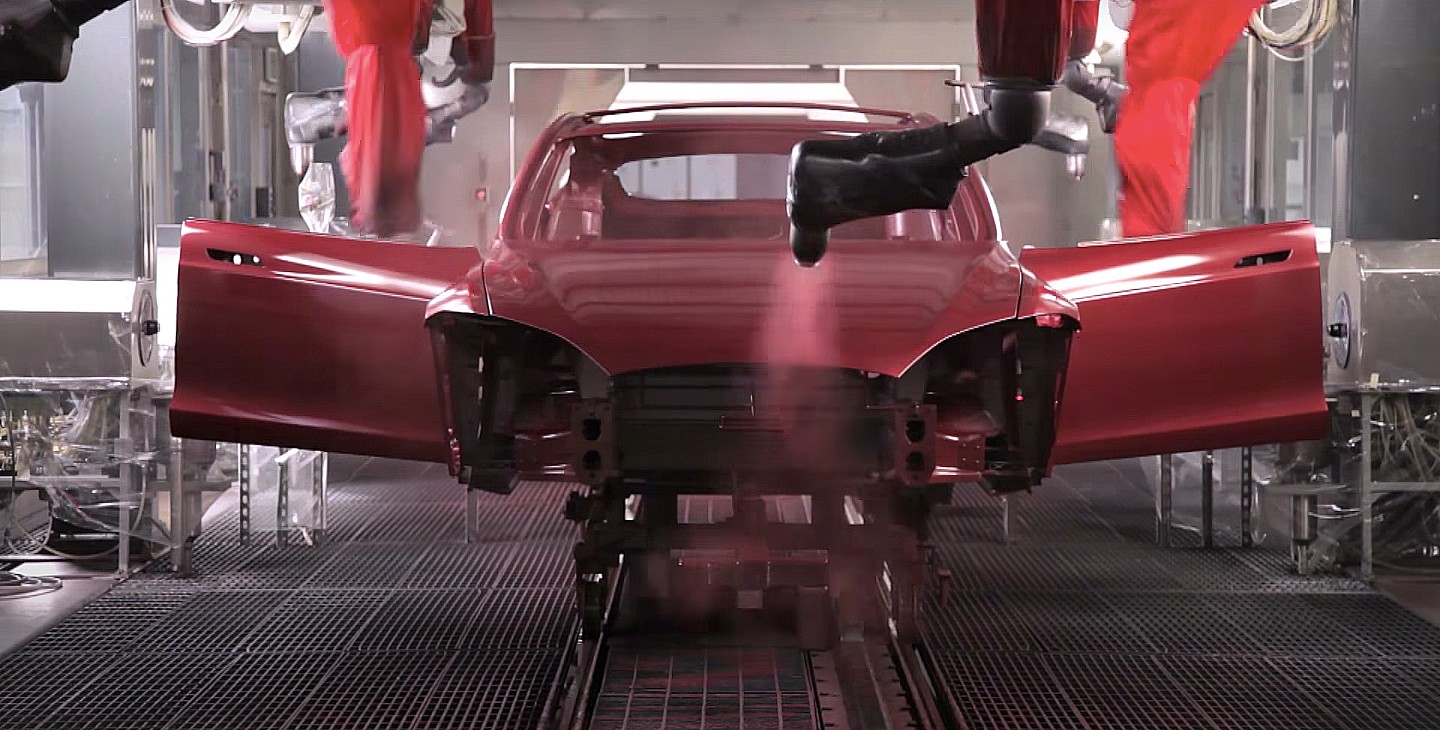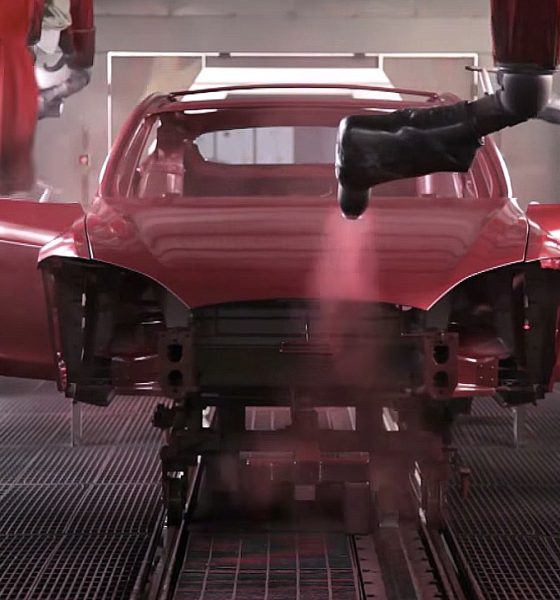

News
Tesla’s proven anti-pandemic safety plan has fallen on deaf ears amid an anti-Elon Musk narrative
One of the most remarkable things that one can witness is the birth and spread of a narrative. Narratives are powerful, as they are capable of affecting and perhaps even changing the perception of people on a particular person or topic. Such a narrative is forming in the Tesla-sphere today: one that completely ignores a company’s proven efforts to battle the coronavirus, and one that brands the electric car maker’s CEO as a de facto villain that cares not for his employees.
Amidst the ongoing issues surrounding the reopening of the Fremont factory, Tesla publicly shared a Return to Work Playbook that it will be using to protect and prevent its workers from contracting the coronavirus. The strategies outlined in the playbook are modeled after the company’s efforts in Gigafactory Shanghai, which successfully battled the virus when it was ravaging China. Tesla’s Shanghai plant was barely affected by the pandemic, and it is back in full operations today.
Alameda County officials have not given Tesla the green light to resume operations in the Fremont plant, a factor that has resulted in heated online discussions between Elon Musk, TSLA critics and supporters, and local government officials. County officials argue that Tesla is yet to meet certain guidelines that would allow its formal approval to reopen the Fremont factory, but no details about these criteria have been released thus far. This has resulted in a rather sticky situation. The county says Tesla is not fulfilling safety guidelines, but it would not specify which.
Strangely enough, Alameda County has also not discussed which parts of Tesla’s Return to Work Playbook are inadequate. A look at the playbook shows several intensive safety protocols that the company will be adopting to prevent the spread of the virus. But even the existence of the playbook itself, and more importantly, its contents, do not seem to be acknowledged by representatives of Alameda County when they speak against the electric car maker’s intentions to reopen the Fremont plant.
CEO Elon Musk has ordered Tesla’s Fremont factory to reopen despite opposition from Alameda County officials. Musk even noted that if anyone were to be arrested due to the factory’s reopening, it should only be him. Such a move has triggered a wave of negative coverage on the CEO, with some articles claiming that Musk is “asking” to be arrested, or “daring” law enforcement to apprehend him. A narrative has also formed suggesting that Tesla and Musk are “forcing” Fremont’s employees to build cars without any regard for public safety. A report from The Washington Post even quoted a Fremont factory worker who reportedly stated that “we are extremely frustrated, angry, scared, that Elon is putting his cars before his workers.”
Such a narrative is compelling, of course, and it makes for a good story. Every tale needs a villain, and Musk, with his outspoken, controversial remarks about the ongoing lockdown, is the perfect target. What is missing from this narrative is the fact that Musk himself has been quoted time and time again, in both spoken and written form, that workers at the plant are not forced to come to work at all. “I’d like to be super clear that if you feel the slightest bit ill or even uncomfortable, please do not feel obligated to come to work. I will personally be at work, but that’s just me. Totally ok if you want to stay home for any reason,” Musk wrote back in March.
A look at the social media feeds from Fremont factory workers paint a much less controversial picture amidst the facility’s reopening as well. Inasmuch as mainstream reports today are running with a narrative that suggests Tesla is forcing employees to catch the virus or perish for the sake of Musk’s pockets, such sentiments do not seem universal for the company’s workforce. Some workers at the factory have noted that they appreciate that work is being resumed, and that the company is indeed following through with its stringent anti-pandemic strategies.
But such a scenario does not paint a narrative that is as compelling as a Machiavellian CEO forcing thousands of employees to perish for his personal profits. If Tesla is simply using a playbook that is tried and tested in Shanghai, and if workers are actually appreciative of the factory’s reopening, the anti-Elon Musk narrative gets lost. If there are no evil CEOs and mass numbers of employees being abused, Tesla’s Fremont facility becomes just a regular car production facility that is reopening its doors after a shutdown: one that is no different than car factories that are already open or are poised to reopen in the coming days.
Unfortunately, the draw of Musk and Tesla and their surrounding narratives are simply too tempting to ignore.
Tesla Return to Work Playbook by Simon Alvarez on Scribd

News
Tesla (TSLA) receives “Buy” rating and $551 PT from Canaccord Genuity
He also maintained a “Buy” rating for TSLA stock over the company’s improving long-term outlook, which is driven by autonomy and robotics.

Canaccord Genuity analyst George Gianarikas raised his Tesla (NASDAQ:TSLA) price target from $482 to $551. He also maintained a “Buy” rating for TSLA stock over the company’s improving long-term outlook, which is driven by autonomy and robotics.
The analyst’s updated note
Gianarikas lowered his 4Q25 delivery estimates but pointed to several positive factors in the Tesla story. He noted that EV adoption in emerging markets is gaining pace, and progress in FSD and the Robotaxi rollout in 2026 represent major upside drivers. Further progress in the Optimus program next year could also add more momentum for the electric vehicle maker.
“Overall, yes, 4Q25 delivery expectations are being revised lower. However, the reset in the US EV market is laying the groundwork for a more durable and attractive long-term demand environment.
“At the same time, EV penetration in emerging markets is accelerating, reinforcing Tesla’s potential multi‑year growth runway beyond the US. Global progress in FSD and the anticipated rollout of a larger robotaxi fleet in 2026 are increasingly important components of the Tesla equity story and could provide sentiment tailwinds,” the analyst wrote.
Tesla’s busy 2026
The upcoming year would be a busy one for Tesla, considering the company’s plans and targets. The autonomous two-seat Cybercab has been confirmed to start production sometime in Q2 2026, as per Elon Musk during the 2025 Annual Shareholder Meeting.
Apart from this, Tesla is also expected to unveil the next-generation Roadster on April 1, 2026. Tesla is also expected to start high-volume production of the Tesla Semi in Nevada next year.
Apart from vehicle launches, Tesla has expressed its intentions to significantly ramp the rollout of FSD to several regions worldwide, such as Europe. Plans are also underway to launch more Robotaxi networks in several more key areas across the United States.
News
Waymo sues Santa Monica over order to halt overnight charging sessions
In its complaint, Waymo argued that its self-driving cars’ operations do not constitute a public nuisance, and compliance with the city’s order would cause the company irreparable harm.

Waymo has filed a lawsuit against the City of Santa Monica in Los Angeles County Superior Court, seeking to block an order that requires the company to cease overnight charging at two facilities.
In its complaint, Waymo argued that its self-driving cars’ operations do not constitute a public nuisance, and compliance with the city’s order would cause the company irreparable harm.
Nuisance claims
As noted in a report from the Los Angeles Times, Waymo’s two charging sites at Euclid Street and Broadway have operated for about a year, supporting the company’s growing fleet with round-the-clock activity. Unfortunately, this has also resulted in residents in the area reportedly being unable to sleep due to incessant beeping from self-driving taxis that are moving in and out of the charging stations around the clock.
Frustrated residents have protested against the Waymos by blocking the vehicles’ paths, placing cones, and “stacking” cars to create backups. This has also resulted in multiple calls to the police.
Last month, the city issued an order to Waymo and its charging partner, Voltera, to cease overnight operations at the charging locations, stating that the self-driving vehicles’ activities at night were a public nuisance. A December 15 meeting yielded no agreement on mitigations like software rerouting. Waymo proposed changes, but the city reportedly insisted that nothing would satisfy the irate residents.
“We are disappointed that the City has chosen an adversarial path over a collaborative one. The City’s position has been to insist that no actions taken or proposed by Waymo would satisfy the complaining neighbors and therefore must be deemed insufficient,” a Waymo spokesperson stated.
Waymo pushes back
In its legal complaint, Waymo stated that its “activities at the Broadway Facilities do not constitute a public nuisance.” The company also noted that it “faces imminent and irreparable harm to its operations, employees, and customers” from the city’s order. The suit also stated that the city was fully aware that the Voltera charging sites would be operating around the clock to support Waymo’s self-driving taxis.
The company highlighted over one million trips in Santa Monica since launch, with more than 50,000 rides starting or ending there in November alone. Waymo also criticized the city for adopting a contentious strategy against businesses.
“The City of Santa Monica’s recent actions are inconsistent with its stated goal of attracting investment. At a time when the City faces a serious fiscal crisis, officials are choosing to obstruct properly permitted investment rather than fostering a ‘ready for business’ environment,” Waymo stated.
News
Tesla FSD v14.2.2 is getting rave reviews from drivers
So far, early testers have reported buttery-smooth drives with confident performance, even at night or on twisty roads.

Tesla Full Self-Driving (Supervised) v14.2.2 is receiving positive reviews from owners, with several drivers praising the build’s lack of hesitation during lane changes and its smoother decision-making, among others.
The update, which started rolling out on Monday, also adds features like dynamic arrival pin adjustment. So far, early testers have reported buttery-smooth drives with confident performance, even at night or on twisty roads.
Owners highlight major improvements
Longtime Tesla owner and FSD user @BLKMDL3 shared a detailed 10-hour impression of FSD v14.2.2, noting that the system exhibited “zero lane change hesitation” and “extremely refined” lane choices. He praised Mad Max mode’s performance, stellar parking in locations including ticket dispensers, and impressive canyon runs even in dark conditions.
Fellow FSD user Dan Burkland reported an hour of FSD v14.2.2’s nighttime driving with “zero hesitations” and “buttery smooth” confidence reminiscent of Robotaxi rides in areas such as Austin, Texas. Veteran FSD user Whole Mars Catalog also demonstrated voice navigation via Grok, while Tesla owner Devin Olsen completed a nearly two-hour drive with FSD v14.2.2 in heavy traffic and rain with strong performance.
Closer to unsupervised
FSD has been receiving rave reviews, even from Tesla’s competitors. Xpeng CEO He Xiaopeng, for one, offered fresh praise for FSD v14.2 after visiting Silicon Valley. Following extended test drives of Tesla vehicles running the latest FSD software, He stated that the system has made major strides, reinforcing his view that Tesla’s approach to autonomy is indeed the proper path towards autonomy.
According to He, Tesla’s FSD has evolved from a smooth Level 2 advanced driver assistance system into what he described as a “near-Level 4” experience in terms of capabilities. While acknowledging that areas of improvement are still present, the Xpeng CEO stated that FSD’s current iteration significantly surpasses last year’s capabilities. He also reiterated his belief that Tesla’s strategy of using the same autonomous software and hardware architecture across private vehicles and robotaxis is the right long-term approach, as it would allow users to bypass intermediate autonomy stages and move closer to Level 4 functionality.








